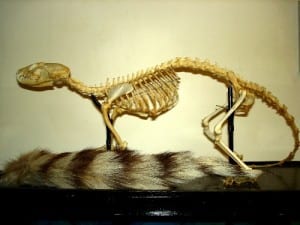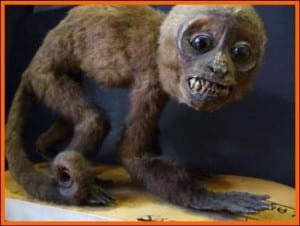Specimen of the Week 204: The ringtail skeleton and tail skin
By Jack Ashby, on 7 September 2015
For the past couple of weeks we’ve been closed to the public while works began to replace our ancient heating system. This means that my favourite parts of the Museum (basically where the marsupials are) have been out of bounds, and so I’ve had to branch out somewhat beyond my usual cabinet to select my Specimen of the Week.
I’ve kept it topical, to link with recent zoological (specifically genital) social media trends, and also to an animal that shares its name with a group of marsupials.
This week’s Specimen of the Week is… (more…)
 Close
Close







